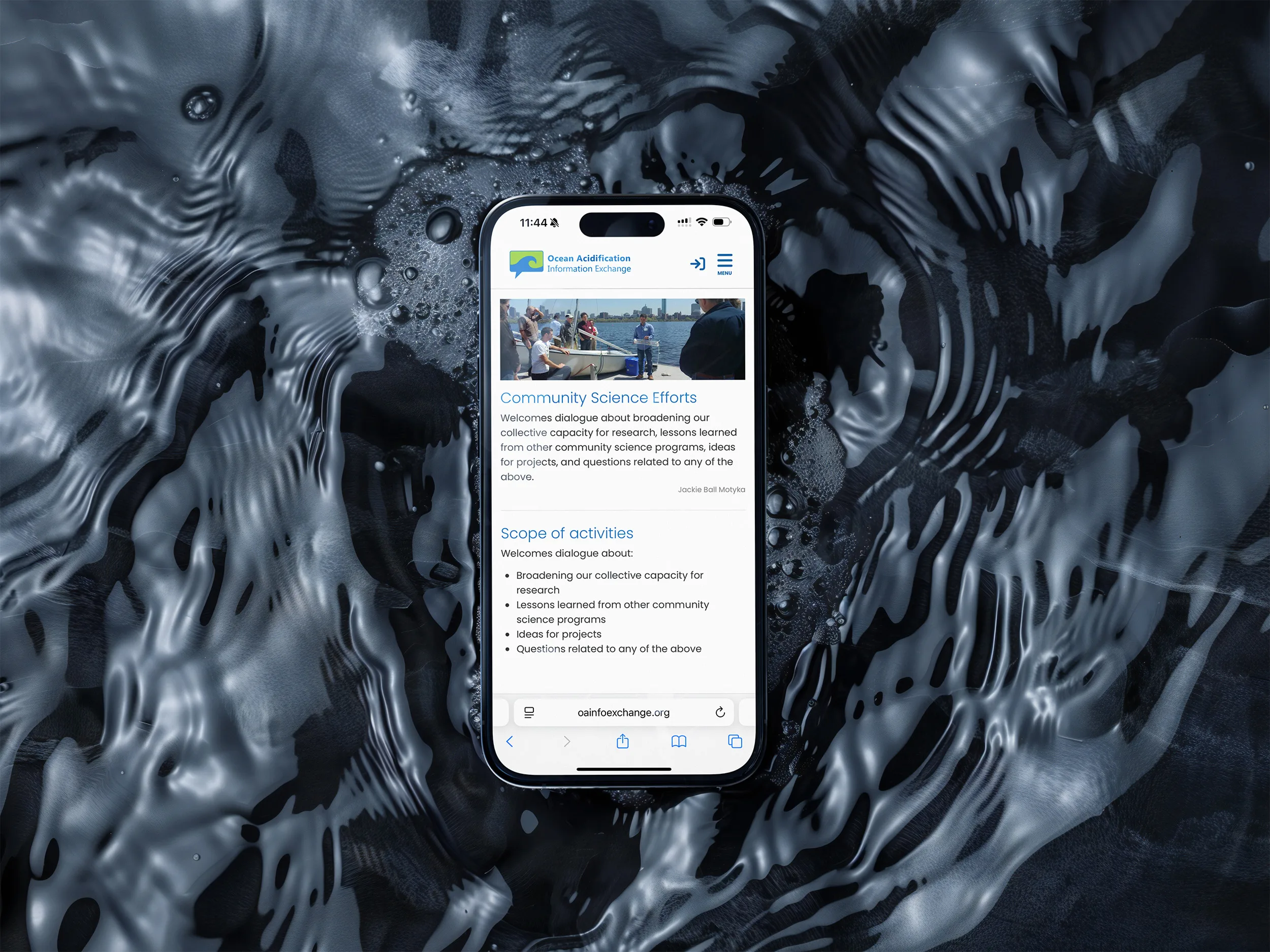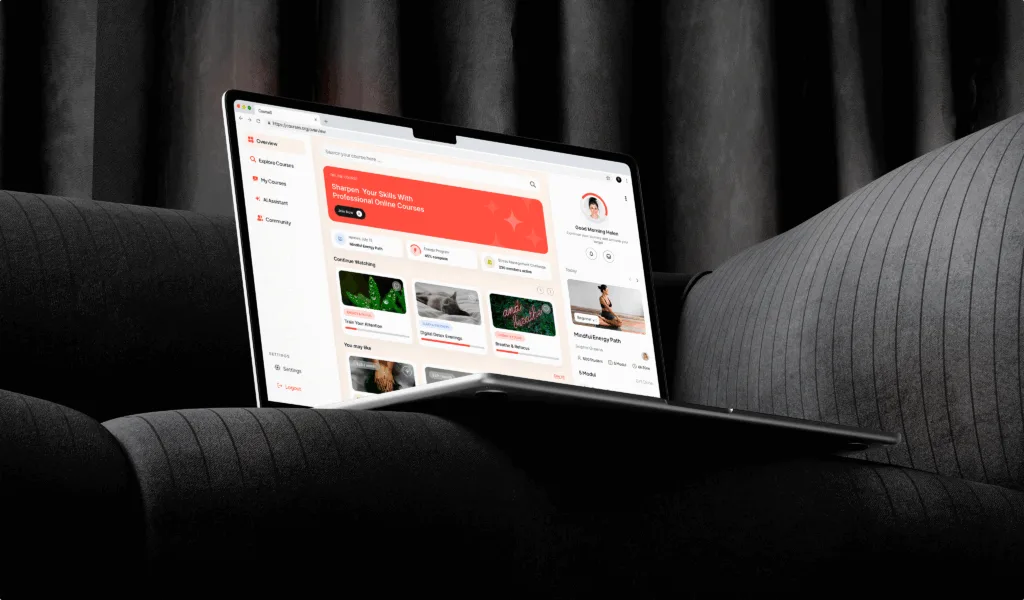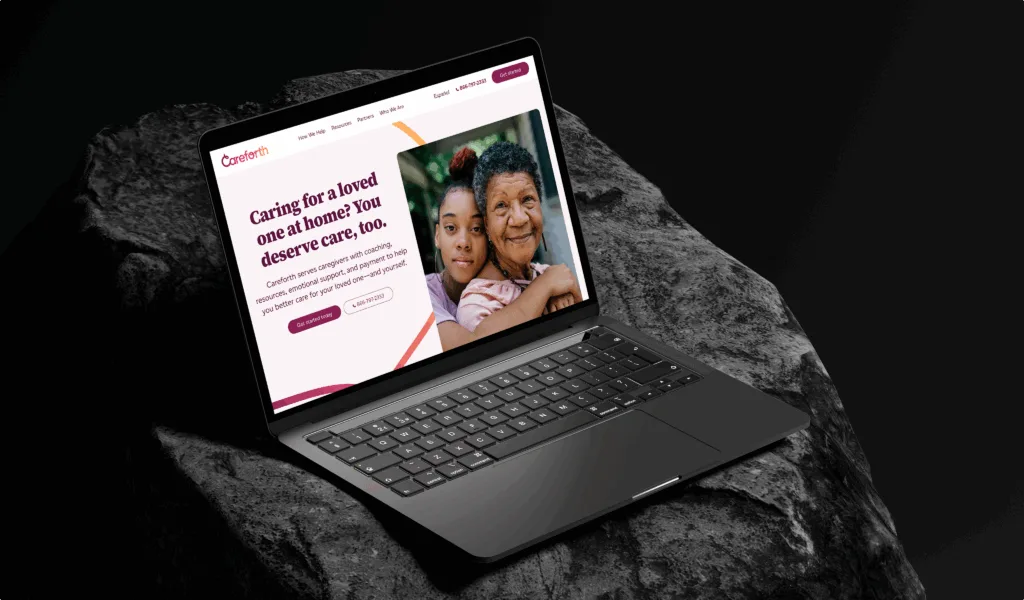The Ocean Acidification Information Exchange, an online community of professionals working on ocean and coastal acidification, needed to rebuild its old, slow, and high-maintenance website. As a technical partner, our task was to recommend the right platform and execute a complex migration without disrupting the existing user experience. By moving the site to Open Social, the team gained a flexible and scalable website that requires fewer resources to maintain and now supports stronger social features, helping members collaborate, share updates, and stay connected.
Fostering collaboration in response to environmental challenges
The Ocean Acidification Information Exchange (OAIE) brings together scientists, educators, policymakers, resource managers, aquaculturists, and other professionals dedicated to understanding and addressing ocean and coastal acidification. At the center of the platform are interactive teams where members learn from each other, share insights, and develop actionable strategies.
Unlike traditional informational websites, OAIE is built around participation. Members join topic- or region-based groups, post updates and documents, share events and links, and engage in discussions. They can follow topics, like and comment on posts, and collaborate within both public and private teams. This social structure supports a dynamic, informed community working together on one of today’s most pressing environmental issues.
No ability to change, improve, or optimize
The previous OAIE website, built on ASP.NET with multiple layers of custom JavaScript, had grown into a large, outdated monolith. Its limited flexibility, declining performance, and high maintenance demands made it increasingly difficult for the team to support and evolve the platform. When the system could no longer keep up with the community’s needs, OAIE partnered with Five Jars to transition to a modern, reliable, and more sustainable solution.
Extensive data migration
The volume of content, relationships, and historical data required a careful and highly coordinated migration process.
Maintaining the UX
A key requirement was ensuring the migration felt seamless for all users without noticeable changes to their established workflows.
Engineering challenges
There were many tech nuances to take care of – from a complex database on Node.js to recreating custom functionality.
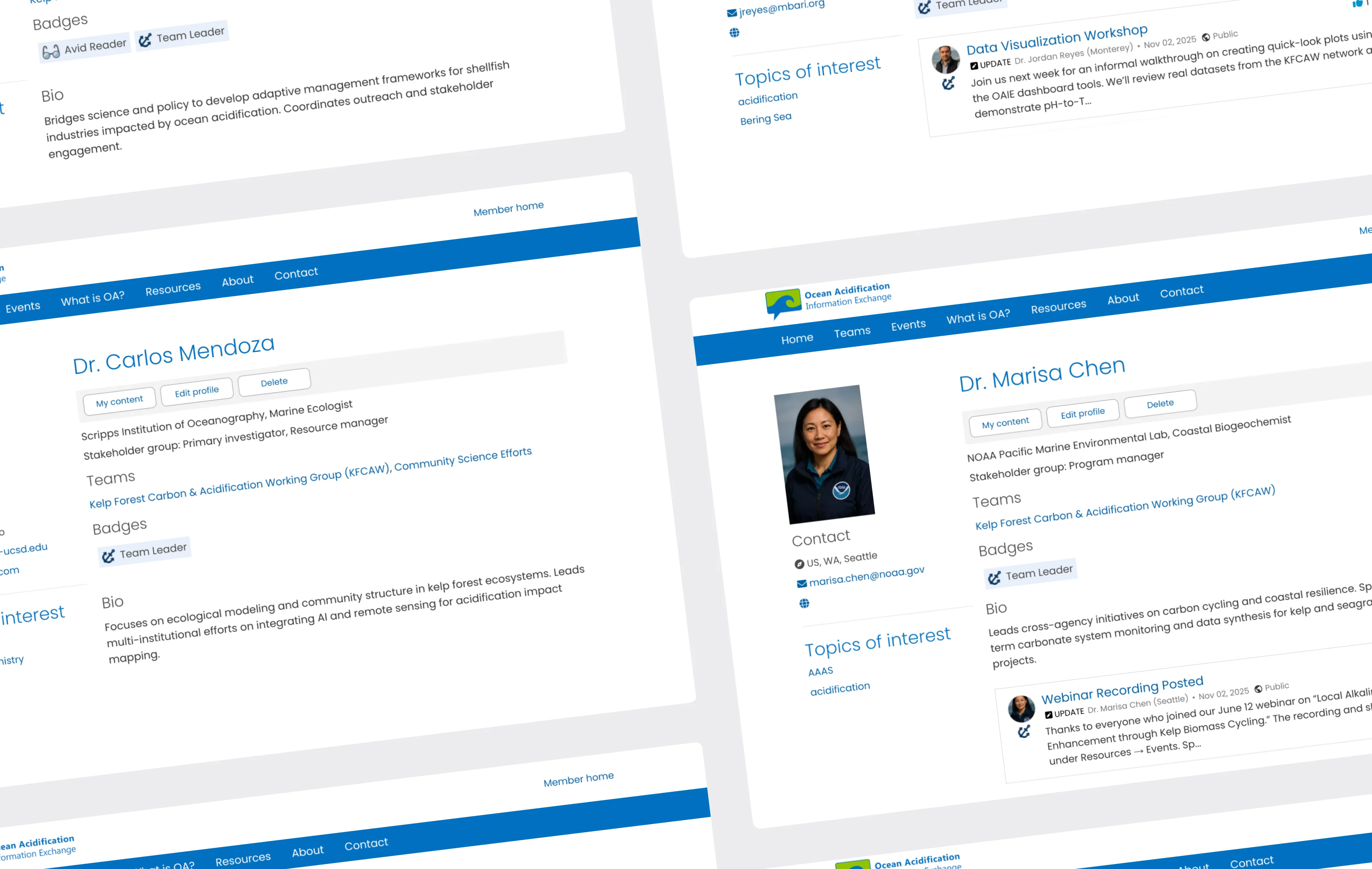
Diving into the discovery phase
At Five Jars, we value mission-driven projects, and we approached the OAIE migration with a deep commitment to supporting a community that advances critical environmental work.
Before proposing a migration path, our business analyst conducted a detailed audit of the platform’s high-level requirements. We mapped user profiles and journeys – work that had never been formally documented – ensuring we understood how scientists, editors, and administrators interacted with the site. Together with the OAIE team, we reviewed all existing functionality and identified:
-
Duplicated features that could be merged
-
Outdated or unused components
-
Flows that could be optimized or simplified
This requirements analysis allowed us to prioritize work, streamline engineering efforts, and define a phased roadmap for delivering a modern, sustainable version of the platform.
48
Gigabytes of data
1700+
Member profiles
5
Years worth of content
Selecting the new technology
The OAIE team needed more than a traditional website – they needed a platform where a diverse community could grow, collaborate, and share knowledge. After gathering all requirements, we evaluated several options and recommended migration to Open Social, a community engagement platform built on Drupal.
Open Social provided essential community features out of the box, reducing engineering effort while still giving us the flexibility to add custom functionality where needed. It also simplified site administration and ensured a consistent, intuitive experience for all user personas.
Website migration to Open Social and its customization
Setting up a new Drupal-based website follows a proven series of steps, and our internal Drupal launch checklist ensures each implementation begins with a solid foundation. For the OAIE migration to Open Social, the initial setup included:
-
Configuring the development environment and CI/CD
-
Preparing project infrastructure and hosting
-
Optimizing and mapping the site structure
-
Rebuilding the navigation to match the existing user experience
We then created page templates and layouts, defined content types, configured user roles and permissions, and introduced front-end improvements to ensure mobile-friendly pages.
The bulk of the effort focused on rebuilding and customizing the features needed for a smooth and familiar user experience, including:
-
Configuring the admin panel to match all essential features from the legacy site
-
Enabling multiple listings for events, updates, teams, and users
-
Setting up notifications and recurring email newsletters
-
Implementing on-page filters, platform-wide search, and results sorting
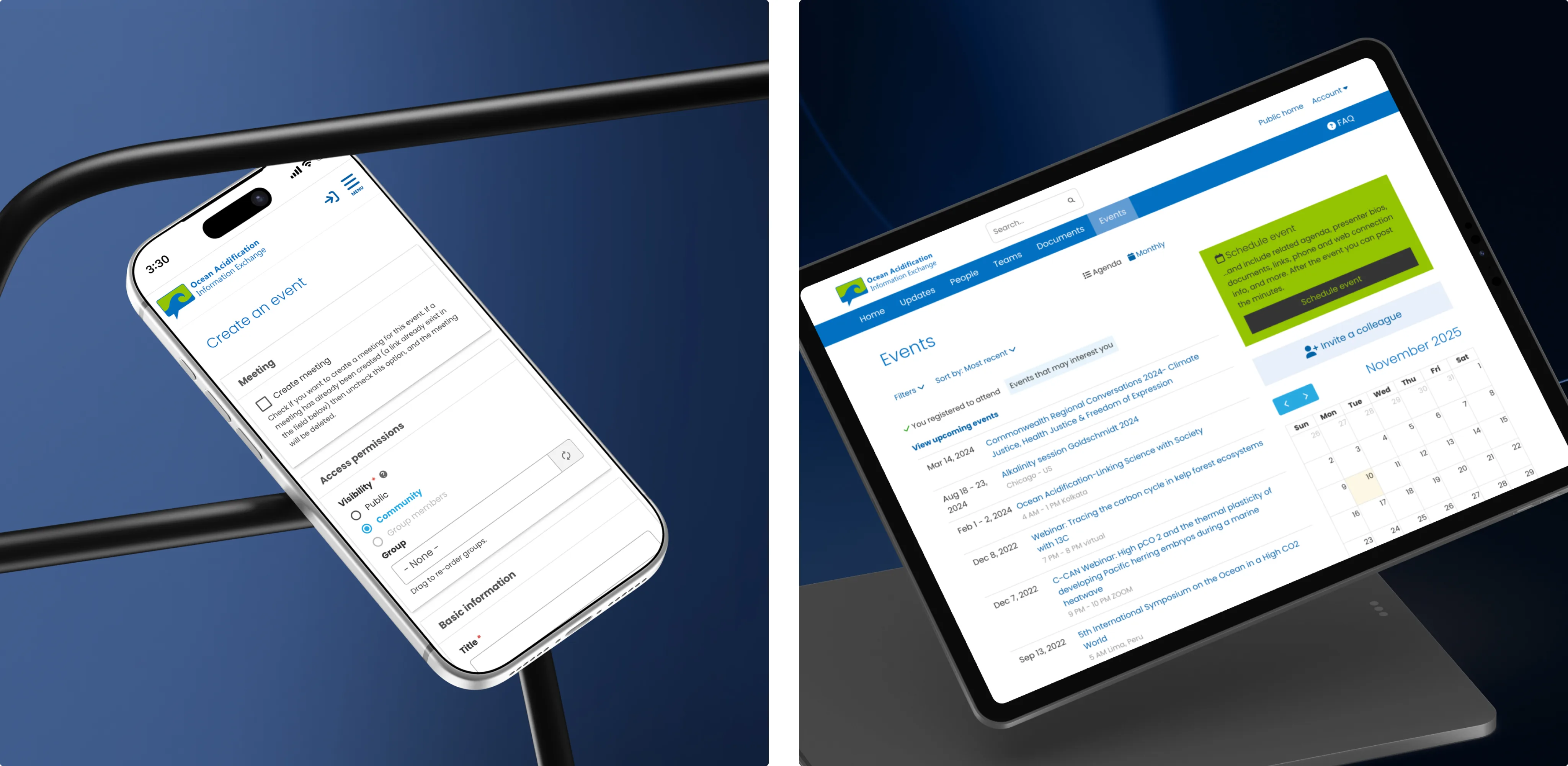
Enhancing the social platform functionality
As part of the migration, Five Jars rebuilt and refined the community-driven features that make OAIE an active, collaborative space for professionals across the ocean and coastal acidification field. While keeping the familiar user experience intact, we modernized how members connect, share updates, and organize their work, ensuring that the new platform supports the daily interactions that power the community.
Key functionality delivered:
-
Groups & teams. Topic-based collaboration spaces where members coordinate projects, share updates, and manage participation with clear roles and access settings.
-
Activity feeds & discussions. Real-time updates and threaded conversations that support transparent, cross-disciplinary communication.
-
Events & webinars. Integrated scheduling for meetings, workshops, and campaigns, automatically connected to relevant topics and groups.
-
Profiles & networking. Personalized accounts highlighting expertise, affiliations, and interests, making it easier to discover collaborators.
-
Resource sharing. Centralized libraries for documents, datasets, publications, and protocols to support efficient knowledge exchange.
-
Topic following. Personalized feeds that help members stay focused on the discussions, regions, and research areas most relevant to their work.
Projects tech stack
Drupal 10.2
PHP 8.1
Mysql
.Net
Solr
Redis
Microsoft SQL

Complex data migration
With the new platform in place, we moved to the next phase, transferring the extensive amount of data stored in the legacy system. The previous website relied on dated technology and a highly complex database structure, which required our engineering team to carefully map and translate the data into a format compatible with Open Social while preserving all existing relationships.
We developed a detailed migration roadmap and ensured every data type was securely transferred and properly configured in the new system. The key groups of structures we migrated included:
-
User profiles, profile settings, and groups/teams
-
Emails and phone numbers
-
Documents, resources, links, and media files
-
Posts, updates, comments, and likes
-
Landing pages, events, and additional content
22
KStructures transferred
2500+
Files migrated
1200+
Topics migrated
Improved web content management
The legacy OAIE website included an admin panel, but its capabilities were limited—content editors were restricted to basic text and image updates, often relying on manual formatting and workarounds. This made routine content management time-consuming and inconsistent.
With the migration to Open Social, our team introduced a modern, flexible content management experience. We created a library of reusable components, streamlined page creation, and made it easier for editors to update existing content without technical assistance. We also provided clear documentation and training to support the OAIE team in adopting the new workflows.
59
%Better desktop performance score
60
%Improved mobile performance score
100
%Website uptime during migration
What we achieved
The OAIE migration transformed a slow, high-maintenance legacy system into a modern, community-centered platform that finally matches the scale and importance of the work its members do. By rebuilding the website on Drupal Open Social, we preserved years of content and established workflows while unlocking new opportunities for collaboration, knowledge sharing, and growth.
The new platform is faster, more reliable, and far easier to manage, empowering the OAIE team to focus on supporting their community rather than maintaining outdated technology. Most importantly, it gives scientists, educators, policymakers, and practitioners a connected digital space where they can exchange expertise and coordinate action in response to urgent environmental challenges.
Seamless migration to Open Social
All profiles, teams, content, and relationships were transferred smoothly to Open Social, ensuring users experienced a familiar interface with improved performance, stability, and long-term reliability.
Stronger community collaboration
Enhanced social features – groups, updates, discussions, events, and resource sharing – give members clearer ways to connect, exchange insights, and coordinate work across regions and disciplines.
Easier management and lower costs
A more intuitive admin experience, reusable components, and a modern platform architecture reduce daily maintenance efforts and significantly lower long-term operating costs.

Today, our collaboration with the Ocean Acidification Information Exchange team continues. Our engineers are focused on further improving site performance, introducing new integrations for end users, and refining content management workflows to support editors even more effectively.
